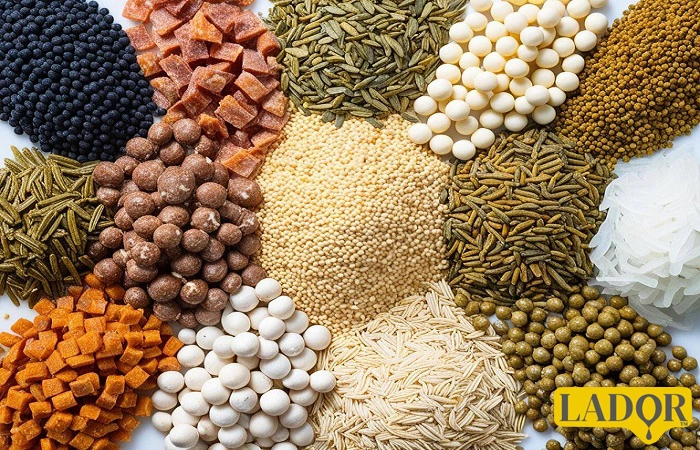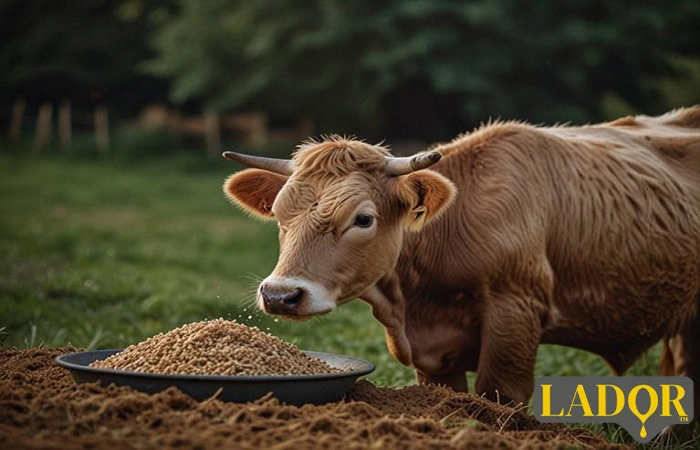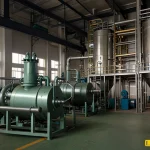Calf nutrition is pivotal in determining their growth, health, and reproductive capabilities. Selecting the right feed and implementing sound nutritional management practices are crucial for a healthy and productive herd. To enhance the quality and flavor of beef, it’s possible to incorporate fattier feeds into the calf’s diet. Certain feeds, such as corn, can lighten the meat’s color. Additionally, the type of plants in the feed can influence the taste of beef. Excessive fiber in the feed may toughen the meat’s texture. In the following sections, we will delve deeper into calf nutrition.
Importance of Calf Nutrition
Proper nutrition fosters rapid and consistent growth in calves. A balanced diet strengthens their immune system and enhances their resistance to diseases. Conversely, inadequate nutrition can lead to digestive issues, weight loss, and, ultimately, mortality. Calves fed a suitable diet are more likely to develop into high-producing dairy cows.
Key Components of a Calf Diet
- Milk: Milk is the first and most crucial food for calves. Colostrum, the calf’s first milk, contains antibodies that provide immunity against diseases.
- Forage: Alfalfa, clover, and other forages are excellent sources of fiber, protein, and minerals.
- Concentrates: Concentrates are high in nutrients such as protein, energy, vitamins, and minerals.
- Water: Water is essential for digestion, body temperature regulation, and other vital functions.

Types of Calf Feed
- Starter Feed: Designed for newborn calves, it is high in milk replacer, protein, and energy.
- food for growth: Used for growing calves, it contains higher levels of fiber and minerals.
- Finisher Feed: Given to calves nearing slaughter, it promotes rapid weight gain.
Methods for Improving Calf Growth
In large-scale livestock farms, the following methods are employed to enhance calf growth:
1. Proper and Balanced Nutrition
- Quality Colostrum: Timely and sufficient feeding of high-quality colostrum immediately after birth is essential for transferring antibodies and essential nutrients.
- Milk or Milk Replacer: Providing milk or milk replacer with the right composition and quantity during the suckling period is crucial for rapid growth and calf health.
- Starter Feed: Offering high-quality and palatable starter feed from an early age helps calves gradually acclimate to solid feed and prepares their digestive system for more complex feeds.
- Grower Feed: After weaning, providing grower feed suitable for the calf’s age and weight is necessary to meet its energy and protein requirements.
2. Proper Environment and Hygiene Management
- Clean and Dry Environment: Keeping calves in a clean, dry, and pathogen-free environment prevents diseases and reduces growth retardation.
- Adequate Ventilation: Providing fresh and clean air in the housing environment helps improve the respiratory health of calves.
- Temperature Control: Maintaining a suitable temperature in the housing environment, especially for young calves, is paramount.
- Timely Vaccination: Routine vaccinations are essential to prevent infectious diseases and improve calf health.
- Parasite Control: Implementing a regular deworming program is mandatory to reduce losses caused by parasites and improve calf growth.
The best time to stop milking the calf
The best time to wean a calf is when it consumes enough solid feed (starter) and its digestive system is ready to digest it. Weaning a calf too early can lead to digestive problems and poor growth due to insufficient rumen development. Gradually reducing the amount of milk in the weeks before complete weaning helps the calf adjust to solid feed and makes the weaning process more successful.
Other factors that influence the optimal weaning time include the calf’s breed, age, weight, health, and the type of feed it consumes.
Stages of Calf Feeding
- Milk-feeding stage: The calf primarily feeds on milk.
- Transition stage: The calf gradually becomes accustomed to consuming forage and concentrating.
- Growth stage: The calf requires a complete and balanced diet.
Factors Affecting Calf Feeding
- Calf age: Nutritional needs change as the calf grows older.
- Calf breed: Different breeds have varying nutritional requirements.
- Climate: In hot and humid regions, the calf’s need for water increases.
- Quality of forage and concentrate: The quality of feed directly affects the calf’s growth and health.
Impact of Feed on Calf Meat Quality
The type and quality of feed given to a calf directly affects the quality of its meat. Some of the most important factors include:
- Intramuscular fat (marbling): Feeds high in saturated fats increase intramuscular fat, giving the meat a better flavor and texture.
- Meat color: Some feeds, such as hay, can darken meat color. Feeds rich in beta-carotene, like corn, can lighten the meat color.
- Meat flavor: The type and quality of feed directly affects the meat’s flavor. For example, feeds containing aromatic plants can give the meat a unique flavor.
- Meat texture: Feeds high in fiber can make the meat texture tougher.
Methods of improving calf food digestion
- Water is essential for digestion. Ensure calves have ample access to clean water. Regular feeding at set intervals aids in better digestion.
- Sudden changes in diet can disrupt a calf’s digestive system.
- Certain feed additives, like enzymes and probiotics, can enhance digestion.
- Using high-quality, contaminant-free feed reduces the risk of digestive issues.

Best Forage for Calves
The best forage for calves depends on their age, breed, and climate. Common forages include:
- Alfalfa: A top choice, rich in protein, fiber, and minerals, aiding digestion.
- Clover: Also, high-quality forage with abundant protein.
- Corn silage: A good energy source, beneficial for growing calves.
- Barley: A nutritious forage suitable for calves.
Calculating Calf Rations
Calculating calf rations is specialized and requires knowledge and experience. Factors like age, breed, weight, activity level, and feeding goal influence the ratio.
For precise calculations, use specialized livestock feed software or consult an animal nutritionist.
Essential Elements of a Balanced Ration
- Energy
- Protein
- Fiber
- Vitamins and minerals
Key Points in Ration Calculation
- The energy-to-protein ratio in the ratio should be balanced.
- The quality of the forage directly affects the nutritional value of the ration.
- If needed, feed additives like vitamin and mineral supplements can be used.
Important Considerations for Calf Feeding
- Feed calves at regular intervals.
- Always provide clean, fresh water.
- The feeding area should be clean and hygienic.
- Nutritional needs vary based on a calf’s age and breed.
- Consult a veterinarian for a suitable feeding plan.
Summary
Calf feed is crucial to their growth, health, and reproduction. Selecting the right ration and proper feeding management ensures a healthy and productive herd. At Aala Oil Sepahan, we produce various animal powders and oils that can be used in feed for dairy cows, calves, laying hens, and more.
Sepahan Oil Company, under the trade name Ladorfat, is active in the field of livestock and poultry feed, various types of oils and powders for livestock and even industrial supplements. Contact us for advice and information.



